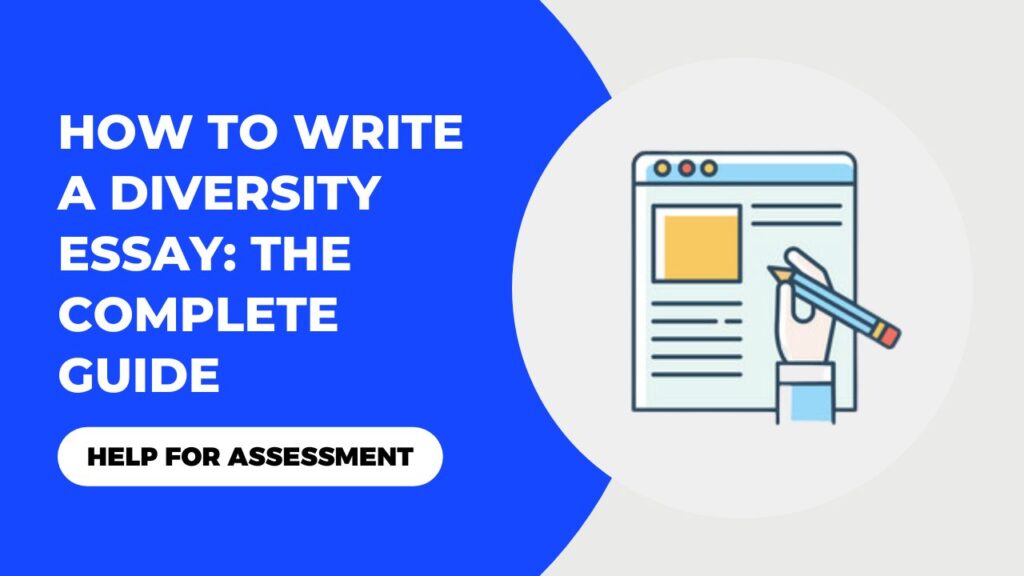It’s easy to freak out when requested to write a diversity essay for your college application.
Think of it like this:
You’ve probably had the most difficult time formatting a personal statement. And maybe writing a statement of purpose wasn’t easy either.
Now you’re facing another a giant paper that will determine whether you get an admission to college or university of your choice or otherwise.
Don’t freak out because a diversity essay doesn’t have to be as difficult to write.
With our step-by-step guide, you’ll write a killer diversity statement that will supplement your personal statement or statement of purpose and will you an admission in a college of your choice.
What is a Diversity Essay?
A diversity essay is an assignment that tests how you view and analyze vastness in cultural backgrounds, experiences, values and viewpoints.
When it comes to writing the essay, do so in a way that proves that you can both embrace and enrich the multicultural environment of the learning institution you intend to join.
A well-written diversity essay will not only communicate your willingness and ability to encourage a culture of varying viewpoints, but also show the admissions board that you recognize diverse identities.
Why Colleges Want You to Write a Diversity Essay
Colleges and universities request students to write diversity essays to determine whether they can fit in learning institutions.
By writing about where you come from and how the society around you view and treat people from your background, the admissions board can get the message that you’re aware of your socioeconomic status.
Further, by showing why you care about equality and inclusion, and stating how you can contribute to diversity during and after school, you make it easy for the admissions board to decide whether you’re fit for a program you’d like to apply to.
Steps to Write a Diversity Essay
There’s more to writing a diversity essay than just putting words on a page.
From researching your topic and writing your first draft to using a proper structure and proofing your work, there’s a lot of work that goes into this assignment. Here’s how to get it right:
Step #1: Start with Research
Even if an admissions panel doesn’t give you a topic to write your essay on, do enough research to understand what your topic of choice is all about.
Even if you already have a firsthand experience with the issue at hand, you still should do research and relate your experiences to external factors.
The last thing you want to do is to is to misrepresent a group of people, so research can help foster clarity.
For example, if you say that gender inequality is the worst act of prejudice in history, provide irrefutable evidence that shows the disadvantage of being gender biased.
Step #2: Create an Outline
With your research completed, you should have enough information to add to your essay.
It’s tempting to immediately get down to writing at this point, but you shouldn’t until you have written an outline.
A standard outline is a solid framework that lets you organize your thoughts and guide your ideas. It also makes it easy for you to cover the most important issues and to leave out what isn’t worth reading.
A 5-paragraph essay format is perfect for a diversity statement. In a content template, you’ll have an introduction paragraph, a body section with three paragraphs for the factors that you’d like to explain, and the concluding paragraph.
The opening paragraph of your diversity essay should be a strong hook. Use this space to introduce yourself. Write your claim in the thesis, and remember it’s the very statement that answers the question you intend to cover in the body paragraphs of the assignment.
You’ll have to write 3 paragraphs for the body section. Here, concentrate on factors that contribute to diversity. Provide concrete details, be as authentic as possible, and make sure you provide your arguments in a manner that the admissions board can identify with.
The concluding paragraph of the essay shouldn’t be difficult to write. It’s here that you restate the thesis, yet in a way that doesn’t look like you’re spamming the section. Instead of just copying and pasting your thesis in this section, you could, for example, restructure the entire sentence but maintain the same meaning.
Step #3: Stick to the Theme of a Diversity Essay
A diversity statement is the kind of a college admissions essay that looks beyond your interests as a person, especially on why you’re the best fit for a certain program in a given institution. It focuses on the theme of cultural, economic, ethnic, and social status of varied groups.
This essay requires you to explain whether you’re an insider or outsider, and how you experience being either and how you can show your commitment to diversity.
How Can You Contribute to a Diversity Essay?
Share a Personal Story
Your diversity essay can pique the interest of an admissions board if it includes a perianal story such as enduring racism in your community or your experience as an immigrant in a foreign country.
Don’t hesitate to recognize your privileges, and, in addition, let your essay reflect your willingness to dismantle inequality and encourage diversity.
Doing so is a sensible way to promote inclusion – even if you’re someone raised with no adversity at all.
Talk about Your Professional Goals
Because the purpose of a diversity essay is to describe how you can bring about equality by promoting inclusion, consider contributing your professional goals in the assignment.
Show how you’ll use your professional goals to ensure diversity and promote equality in your community.
Say you want to be a teacher. Your diversity essay can discuss the difficult of access to quality education.
Then work your way to describing how your profession as a teacher will help to break social, economic, and cultural barriers that hinders access to quality education.

